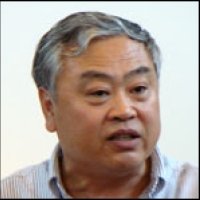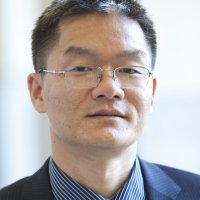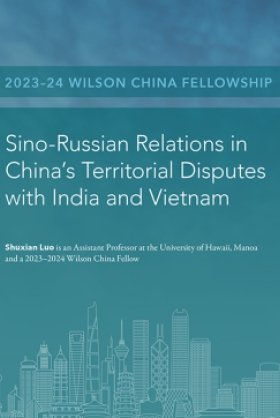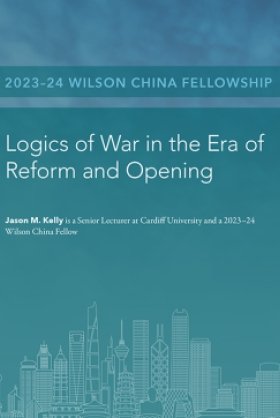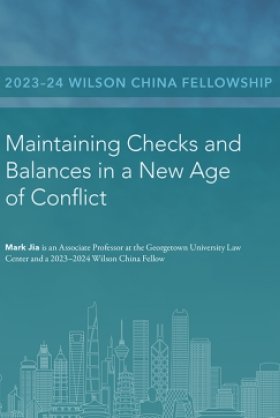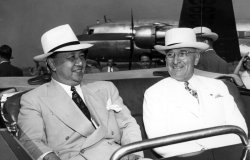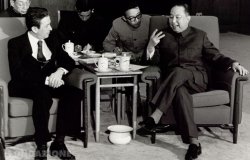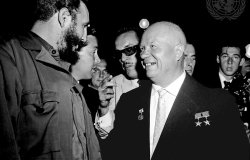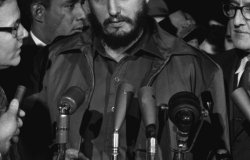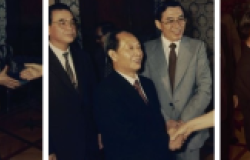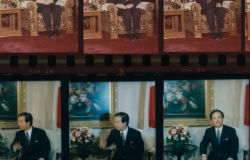Between Aid and Restriction: Changing Soviet Policies toward China’s Nuclear Weapons Program: 1954-1960
The latest addition to the NPIHP Working Paper series explores the history of the relationship between Soviet Union and China during the 1950s and 1960s as China sought to develop a nuclear weapon with Soviet scientific and technological assistance.
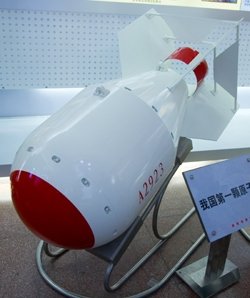
NPIHP is pleased to announce the latest addition to its Working Paper Series, Between Aid and Restriction: Changing Soviet Policies toward China’s Nuclear Weapons Program: 1954-1960, by Zhihua Shen and Yafeng Xia.
The paper's key findings include:
- Soviet aid to China’s nuclear program has typically been viewed by historians as a product of both Soviet leader Nikita Khrushchev’s romantic belief in world socialist revolution, and the strength of the Sino-Soviet alliance.
- New Chinese archival sources presented by Shen and Xia in Between Aid and Restriction, suggest that the history of Chinese-Soviet nuclear cooperation may need to be re-examined: Khrushchev only consented to assist China in developing nuclear energy for peaceful purposes in 1954 because of the post-Stalin power struggle within the Soviet government—during which he expected to acquire much-needed political support from Mao.
- Consequently, Soviet support for the Chinese nuclear energy program between 1954 and 1957 included the construction of a research reactor and cyclotron in China, cooperative uranium prospecting and mining, the establishment of an Eastern Atomic Energy Institute to train specialists in nuclear technology, and other training for Chinese scientists and technicians.
- Despite the peaceful nature of Soviet aid, Mao intended from the outset to use Soviet support to lay the foundation for a nuclear weapons program.
- Soviet support for China’s nuclear program expanded to include directly weapons-related assistance in 1957, after Mao once again expressed his support to Khrushchev following the so-called anti-party incident which threatened to cost Khrushchev his leadership position in the Soviet Union.
- Soviet support for Chinese nuclear weapons development included assistance in uranium enrichment, plutonium reprocessing, warhead design and production, as well as missile technology development.
- Summer 1958 marked the beginning of the end of Soviet nuclear assistance to China, when the PRC bombardment of Jinmen Island, off Taiwan, caught Moscow off guard.
- China’s failure to turn over a captured US-made Sidewinder missile to the Soviet Union for study contributed to the deterioration of Sino-Soviet nuclear relations.
- By 1959, with Khrushchev’s position as leader of the USSR now secure, the flow of Soviet nuclear aid to China became increasingly limited in pace, scope and depth.
- The Soviet decision not to send a long-promised Atomic bomb teaching model to China was among the most concrete manifestations of the deteriorating Sino-Soviet relationship.
- By August 1960 the last of the Soviet nuclear advisors in China had returned to the USSR.
- Soviet assistance had helped China establish a comprehensive nuclear science and technology industry. The end of Soviet aid was a significant set-back, but it came far too late to halt China’s nuclear development completely. China’s first atomic bomb test took place on 16 October 1964.
Zhihua Shen is the director of the Center for Cold War International History Studies at East China Normal University (ECNU) in Shanghai, China. He is the author of numerous books on Cold War history, Sino-Soviet relations, and the history of the People's Republic of China. His main works, in Chinese, include Thinking and Selecting: A History of the People's Republic of China, Vol. 3, 1956-1957 (2008), Soviet Experts in China (2003), and Mao Zedong, Stalin and the Korean War (1998). He is also the editor-in-chief of A Collection of Historical Documents of the Soviet Union (2002), which comprises 34 volumes, published in Chinese.
Yafeng Xia is a Fellow with the Wilson Center's History and Public Policy Program and an associate professor of history at Long Island University in New York and a guest professor at the Center for Cold War International History Studies, East China Normal University in Shanghai. In addition to numerous publications in Chinese, his first book in English, Negotiating with the Enemy: U.S.-China Talks during the Cold War, 1949-72 was published by Indiana University Press 2006.
To view the collection of documents used in this paper, please visit the Digital Archive.
About the Authors

Nuclear Proliferation International History Project
The Nuclear Proliferation International History Project is a global network of individuals and institutions engaged in the study of international nuclear history through archival documents, oral history interviews, and other empirical sources. At the Wilson Center, it is part of the Wilson Center's History and Public Policy Program. Read more

Cold War International History Project
The Cold War International History Project supports the full and prompt release of historical materials by governments on all sides of the Cold War. Through an award winning Digital Archive, the Project allows scholars, journalists, students, and the interested public to reassess the Cold War and its many contemporary legacies. It is part of the Wilson Center's History and Public Policy Program. Read more

History and Public Policy Program
The History and Public Policy Program makes public the primary source record of 20th and 21st century international history from repositories around the world, facilitates scholarship based on those records, and uses these materials to provide context for classroom, public, and policy debates on global affairs. Read more
